Amphibole chain silicate mineral group
~NaCa2Mg5Si7AlO22(OH)2
Crystal class: 2/m (monoclinic)
Space group: C2/m
Edenite is a naturally occurring amphibole compositional end member, having the formula given above. It is an important component in hornblende. I constructed this model at the request of Marian Lupulescu (New York State Museum, Albany, NY) in 2004, as part of a minerals exhibit displaying amphiboles from New York State. The model is built of plastic and metal balls using a modification of the methods described for sheet silicates in Hollocher (1997). For ease of construction, the tetrahedral chains were built fully extended, and are accommodated by somewhat stretched octahedral chains. In these models, the following balls represent the elements:
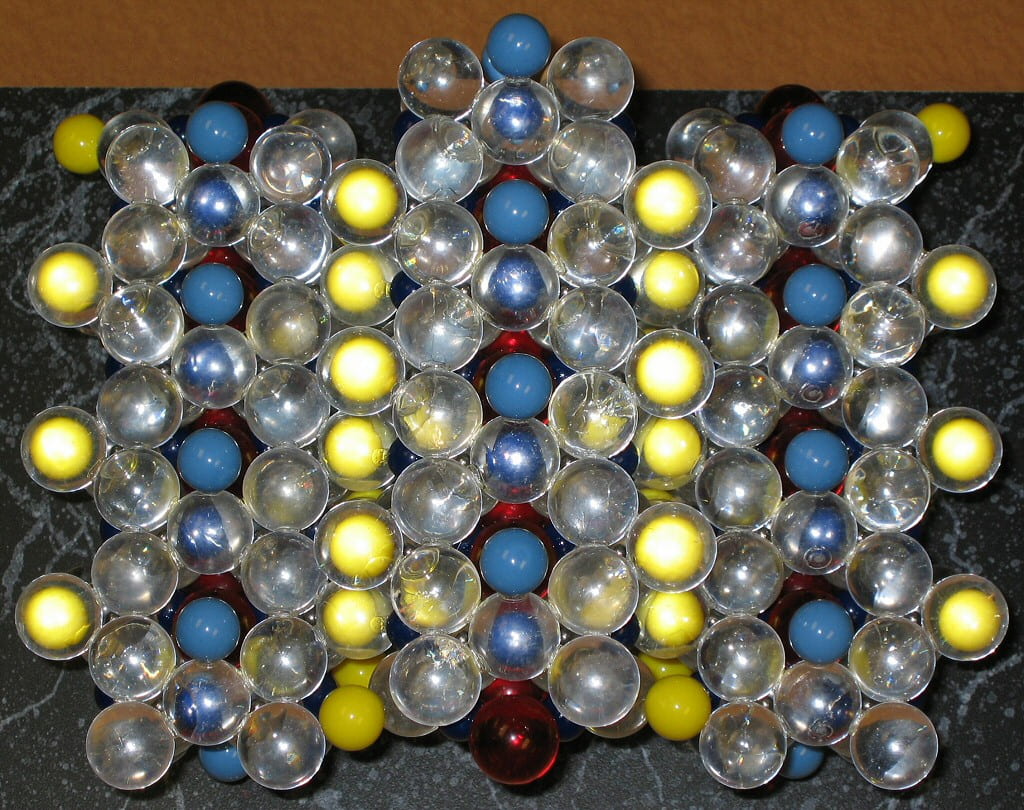 View down the a axis. | 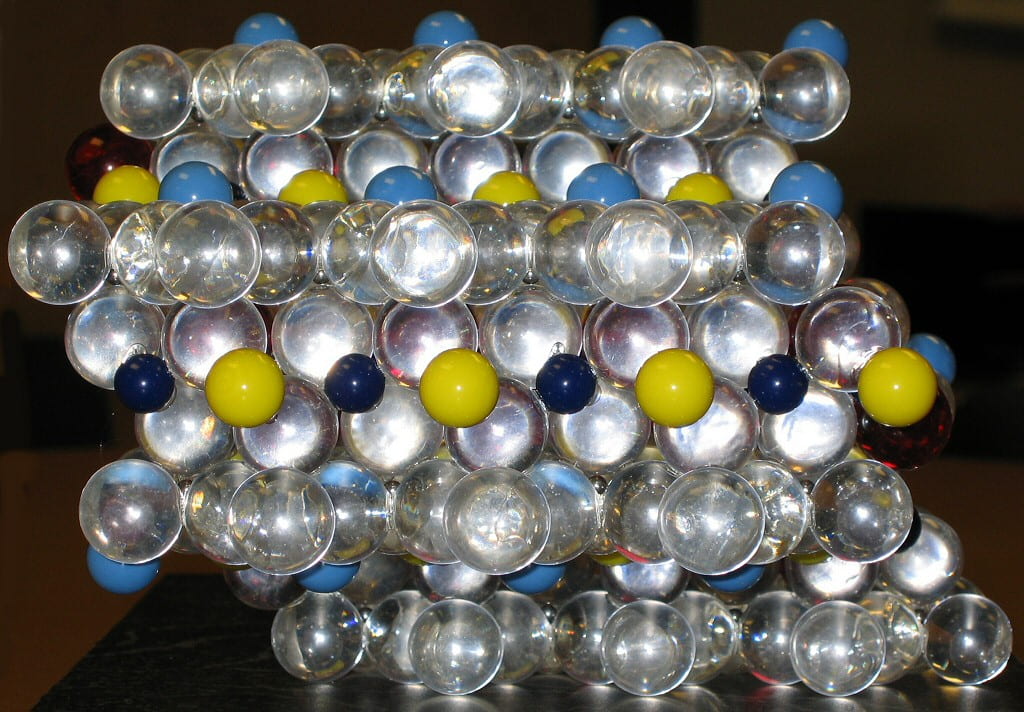 View down the b axis. | 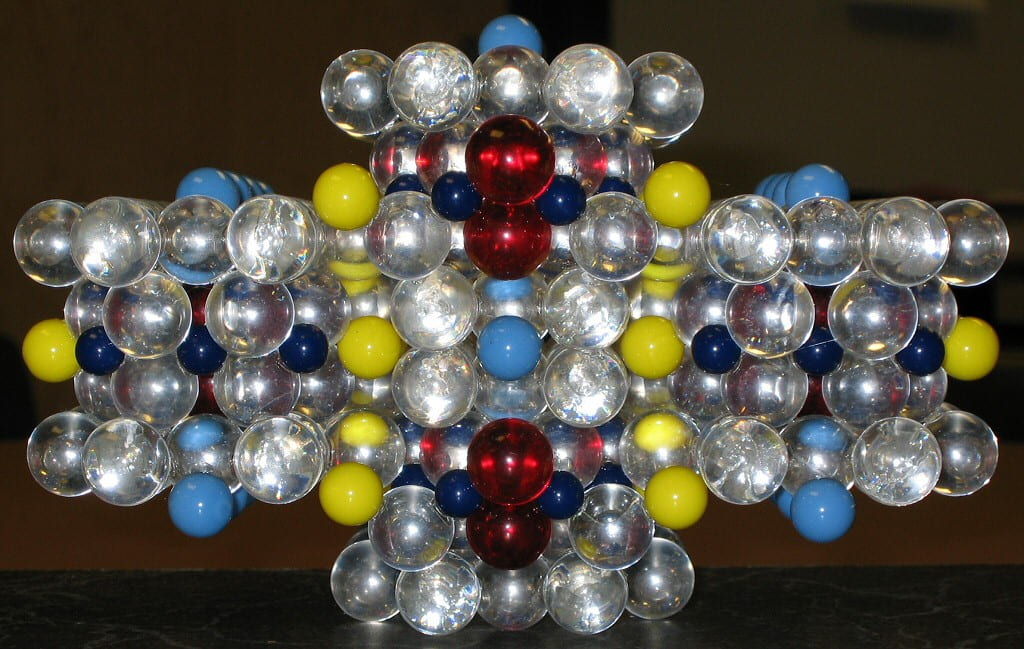 View down the c axis, from the positive end. |
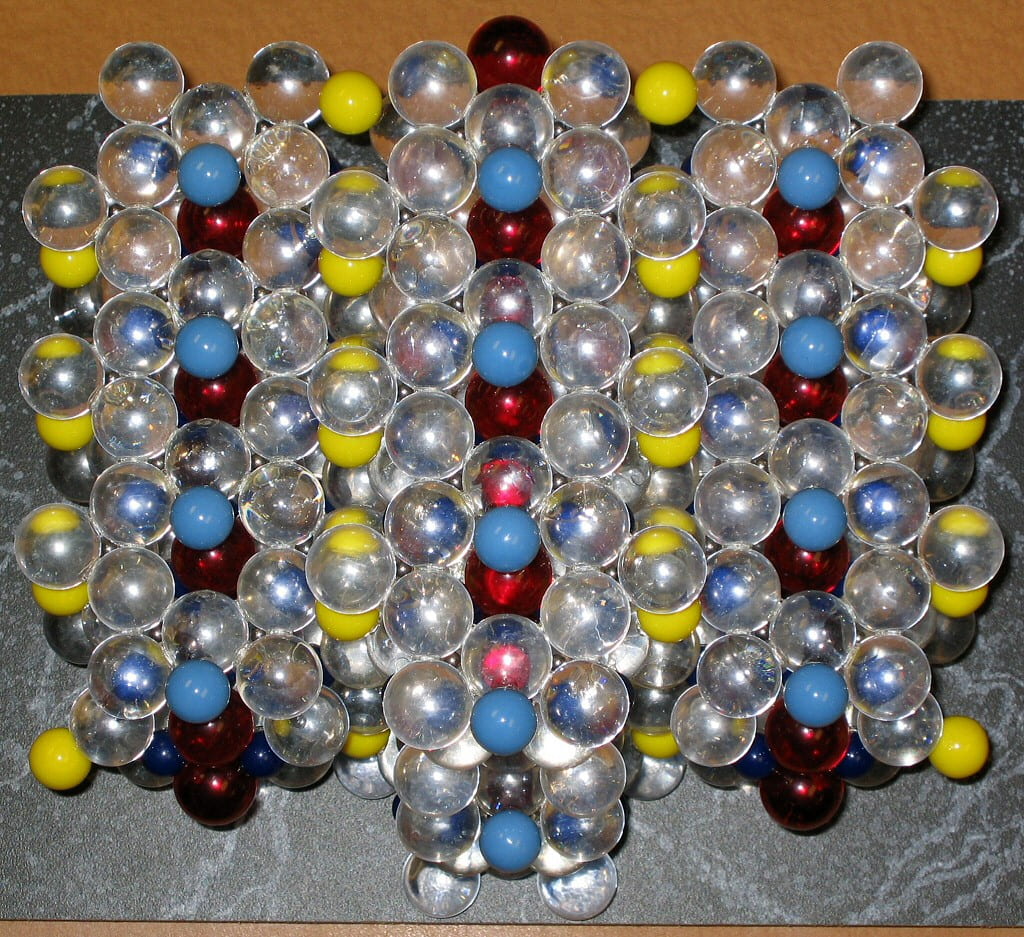 View straight down on {100}. |  Oblique view almost down the b axis. | 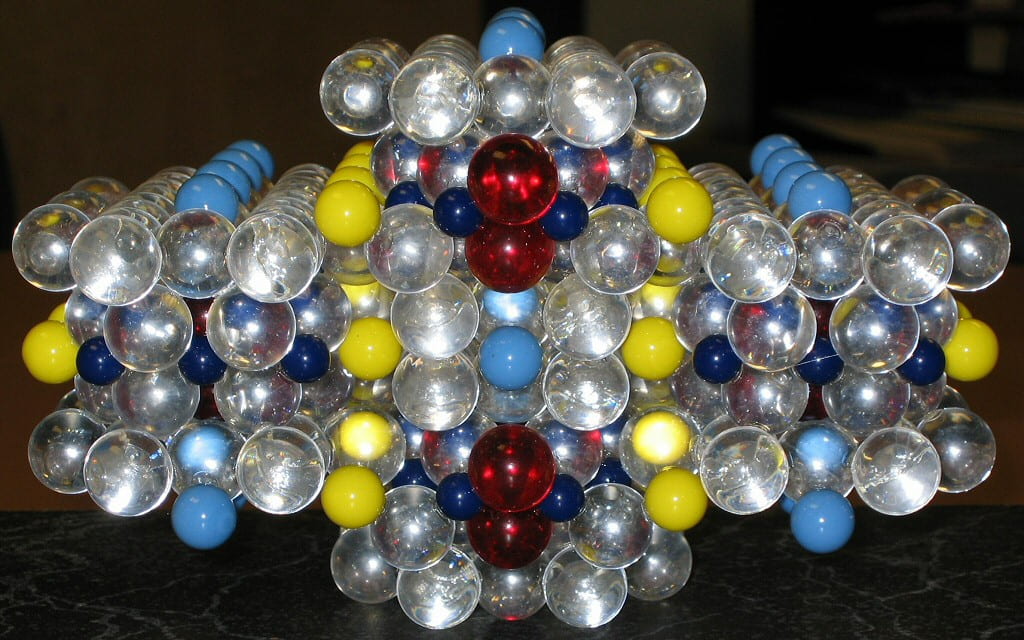 Oblique view almost down the c axis, from the positive end. |
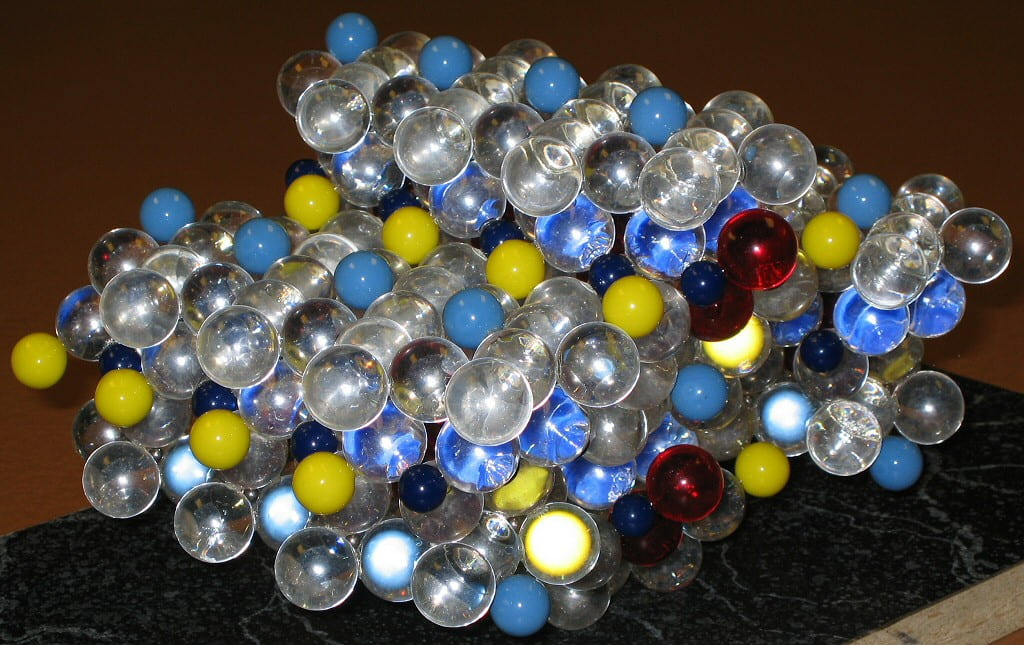 Oblique view from the c axis positive end. | 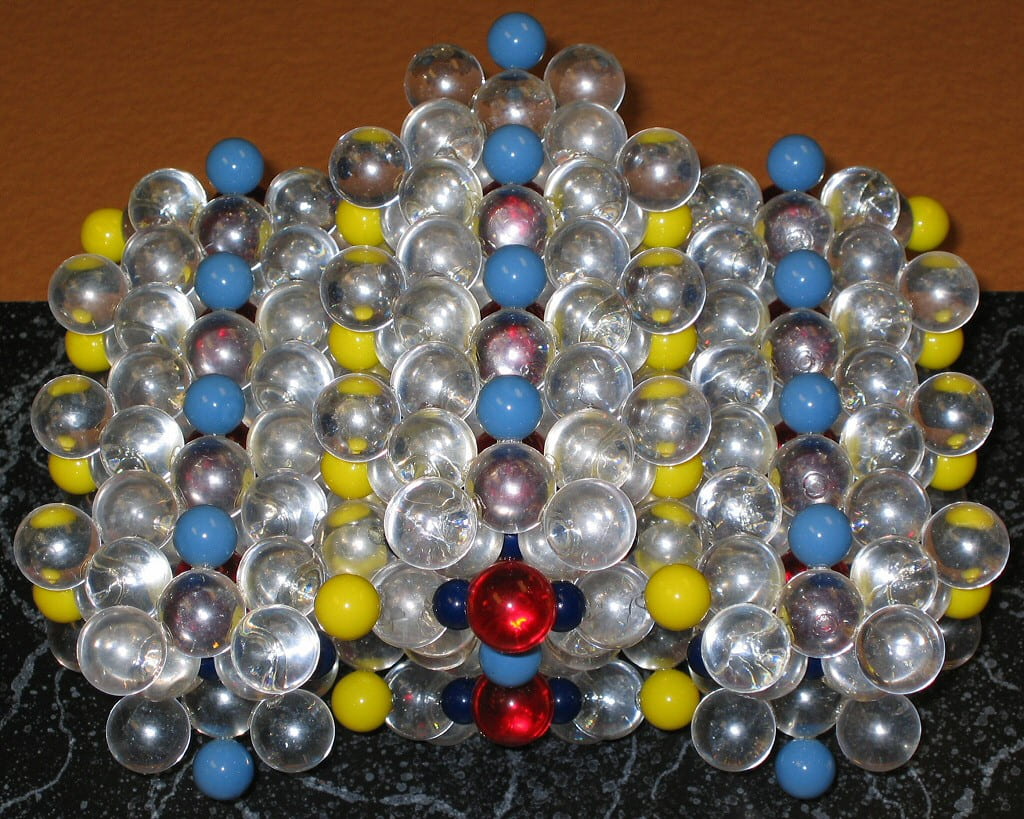 View midway between the a and c axes, from the c axis positive end. | 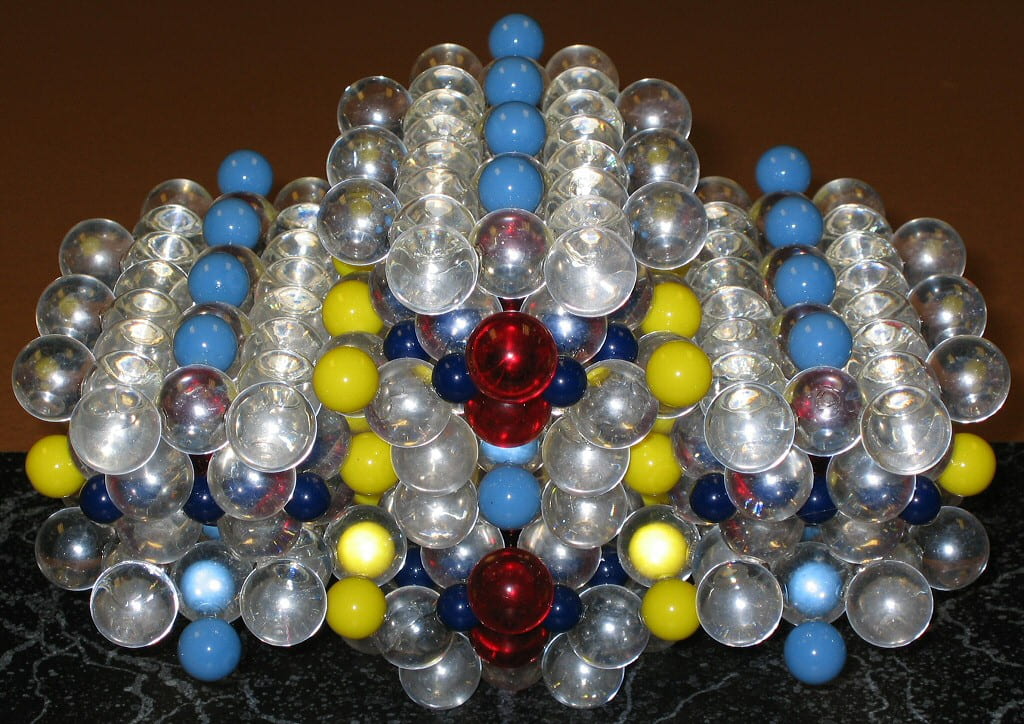 Oblique view close to the c axis, from the positive end. |
 Oblique view from the c axis negative end. |  View midway between the a and c axes, from the c axis negative end. | 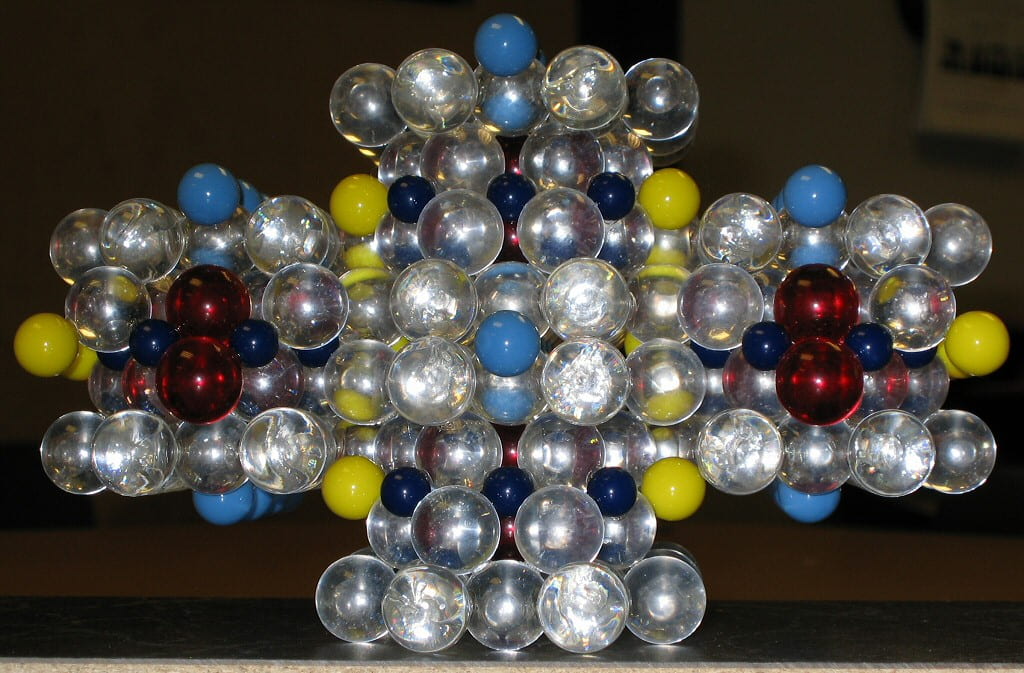 View down the c axis, from the negative end. |
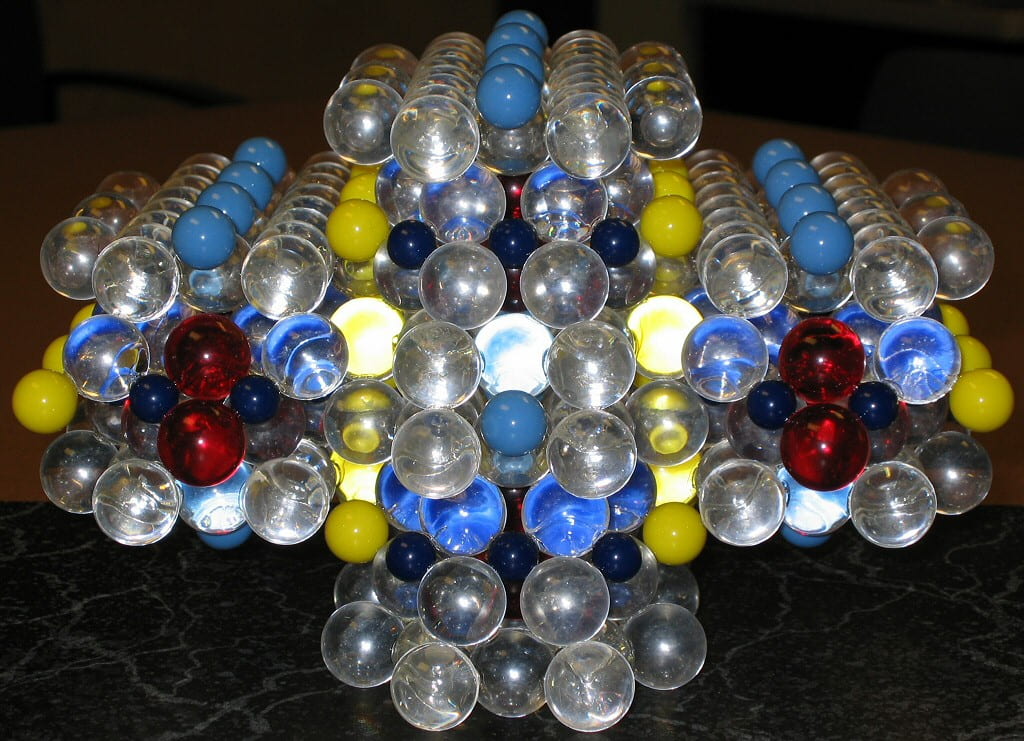 Oblique view close to the c axis, from the negative end. | Empty | empty |

Positive and negative refer to orientations of the octahedra, parallel to the octahedual chains. In the famous model of J.B. Thompson, positive is the direction the ducks are swimming, negative is the other end.
Warning: with real ducks, the front end is not positive if the ducks are angry with you!
Reference
Hollocher, Kurt, 1997, Building crystal structure ball models using pre-drilled templates: sheet structures, tridymite, and cristobalite. In Brady, J.B., Mogk, D.W. and Perkins, D. III, eds., Teaching Mineralogy, Mineralogical Society of America, Washington, D.C., p. 255-282.
Note: As of 2016, obtaining colored plastic balls for building models of this type has become effectively impossible. There are plenty listed in websites and catalogs, but all them I have tried are dead ends. Good luck.

